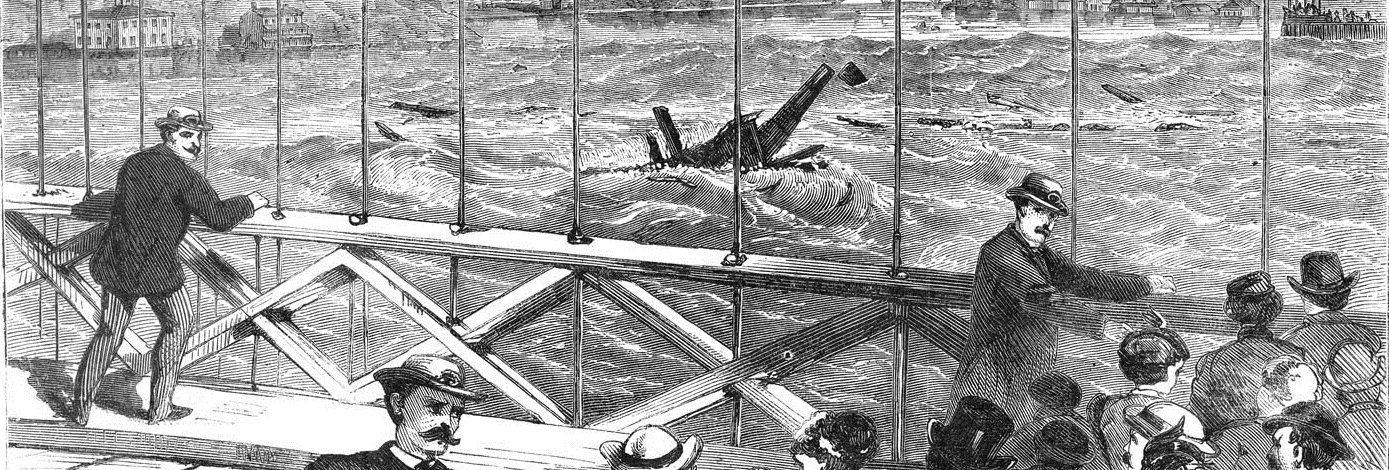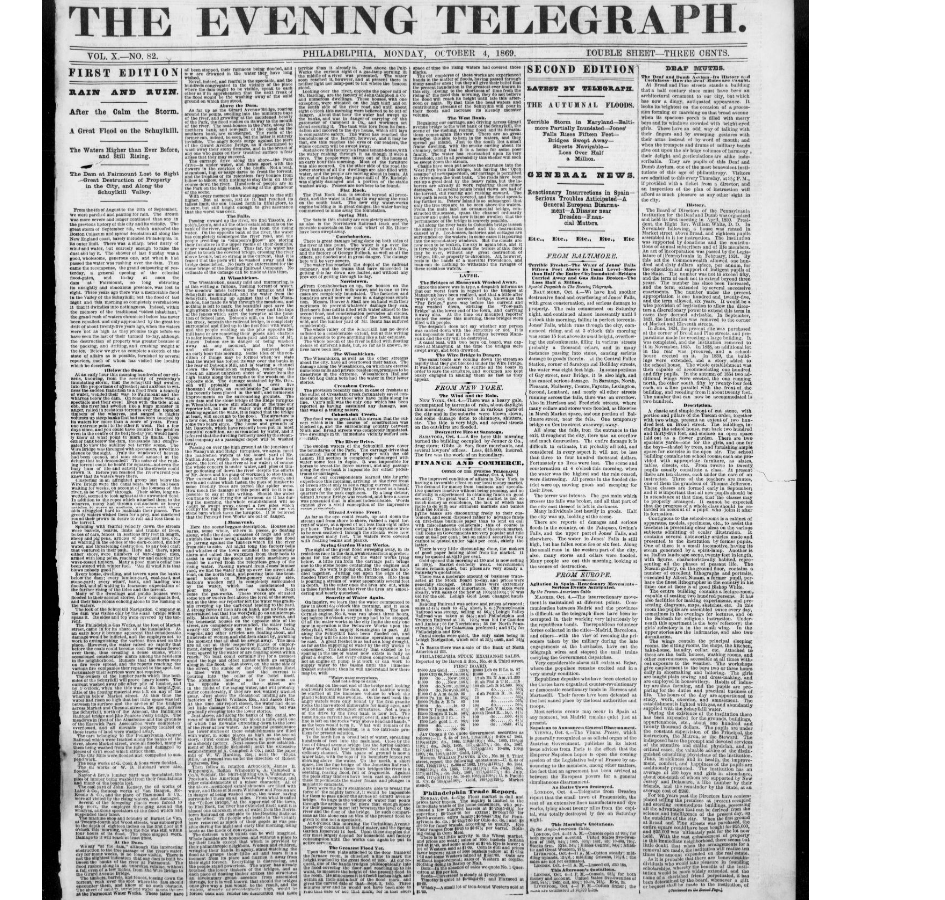This post is part of historian, editor and author Adam Levine's series sharing stories from over two centuries of archives documenting the evolution of water infrastructure that made one of the nation's oldest and largest cities possible.
To get an email or text each time we publish a new history blog, sign up for our Infrastructure and Environment list.
The following is a summary of news reports documenting the worst flood ever recorded on the Schuylkill River in Philadelphia, an event that took place 150 years ago today.
Drought, Then 'Freshet' Nearly Wiped Out Phila. Water Supply in 1869
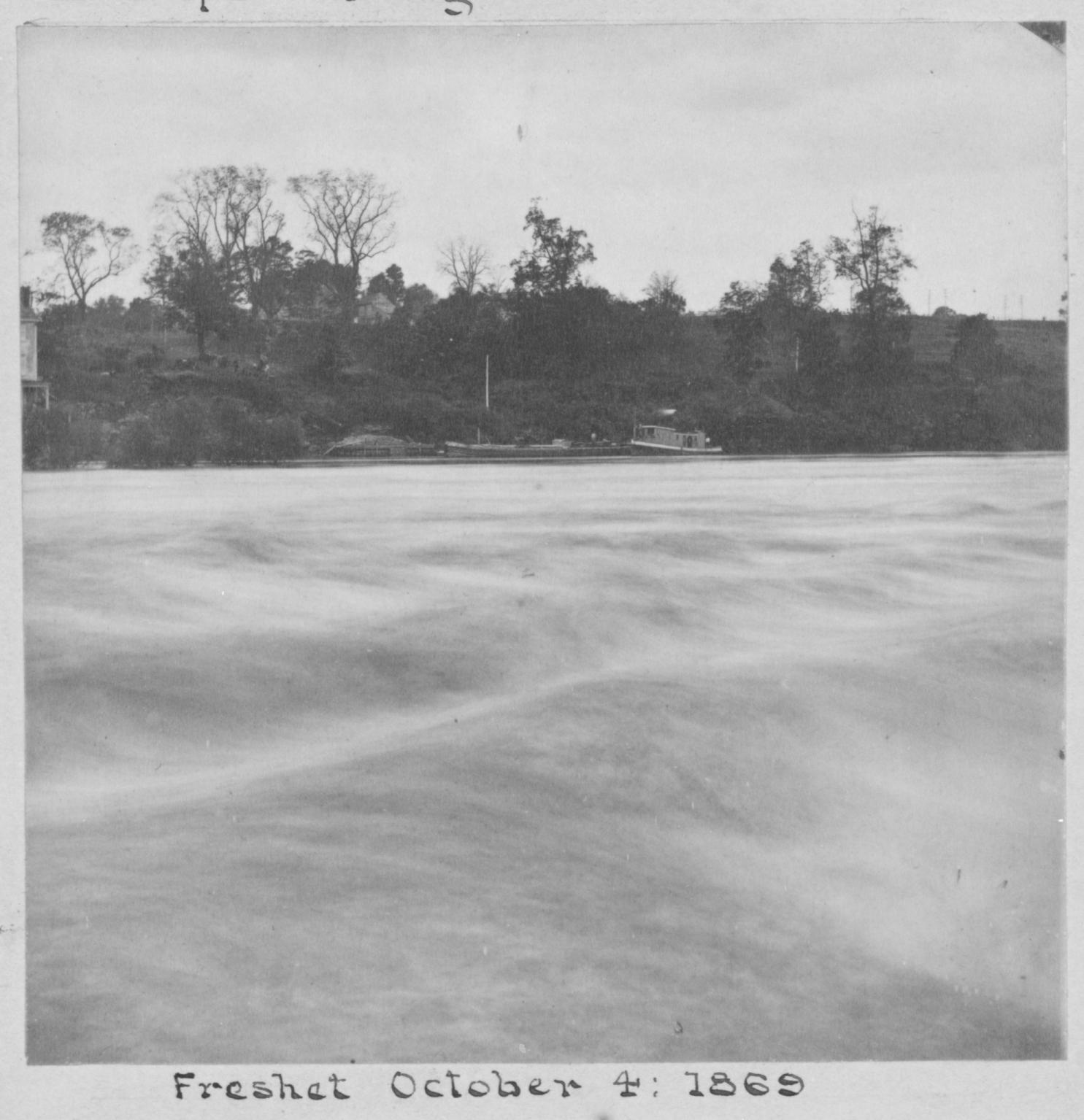
PWD Historical Collection Photograph, October 4, 1869, looking upstream from Fairmount Water Works. The Fairmount Dam is hidden under the deluge. Photograph from the Graff Collection, Franklin Institute.
Among climate change experts, the consensus is that our region is in for a warmer, wetter future with more extreme weather events. But that doesn’t mean we haven’t experienced extreme weather in the past — a fact worth noting today, which marks the 150th anniversary of the worst flood ever to hit the Schuylkill River in Philadelphia.
This catastrophic event began when rain from the outer bands of a hurricane began falling on October 2, 1869. The torrent didn’t let up until the 4th and, by that time, the swollen Schuylkill overtopped the iconic Fairmount Dam.
Located beside the Fairmount Water Works and the present-day Philadelphia Museum of Art, the massive dam was buried beneath more than 11 feet of raging water. According to witnesses, it disappeared in the flood, with not even a hint of its location on the surface.
How intense was the hurricane that caused this surge?
Records are spotty, but anywhere from five to 10 inches of rain fell over various parts of the watershed. It would be nearly a century before our meteorologists regularly gave such storms official names, but this freakish system earned one in the aftermath. Known now as the “Saxby Gale,” the storm had an especially deadly impact in Maine, Nova Scotia, and New Brunswick, killing 37 people.
In Philadelphia, the flood followed close to two months of drought, as captured in this Aug. 28, 1869, watercolor painting of the Schuylkill with “very low water.” The city’s water supply at the time largely came from four Schuylkill River pumping stations and had fallen to critically low levels.
The sudden deluge, it seems, came as a shock to the system.
“A few days ago,” reported the Philadelphia Evening Telegraph, “you could have counted the pebbles even in the centre of [the river’s] bed; and today you would hardly know at what point to mark its limits.”
Headline, Evening Telegraph, October 4, 1869. Library of Congress Chronicling America collection.
Records show the river cresting at 17 feet above normal levels. The next three closest floods ever recorded are in the range of 14-foot crests, with a 14.65-foot flood in 1972, following Hurricane Agnes, coming in as the second largest.
In a painful twist, all drinking water works on the Schuylkill were knocked offline by the flooding. Just one small pumping station in Kensington, on the Delaware River, was left to supply the city’s needs.
The irony was not lost on Philadelphia’s journalists: “A great freshet is as bad as a long drought, as far as the supplying of water by the city works is concerned,” the Telegraph mused, citing an old line of poetry to describe the situation: “Water, water everywhere, and not a drop to drink.”
Before the city even took stock of the damaged infrastructure, the sight of the flood caused a shock of its own and drew crowds of onlookers disturbed by the disappearance of a reliable landmark like the Fairmount Dam.
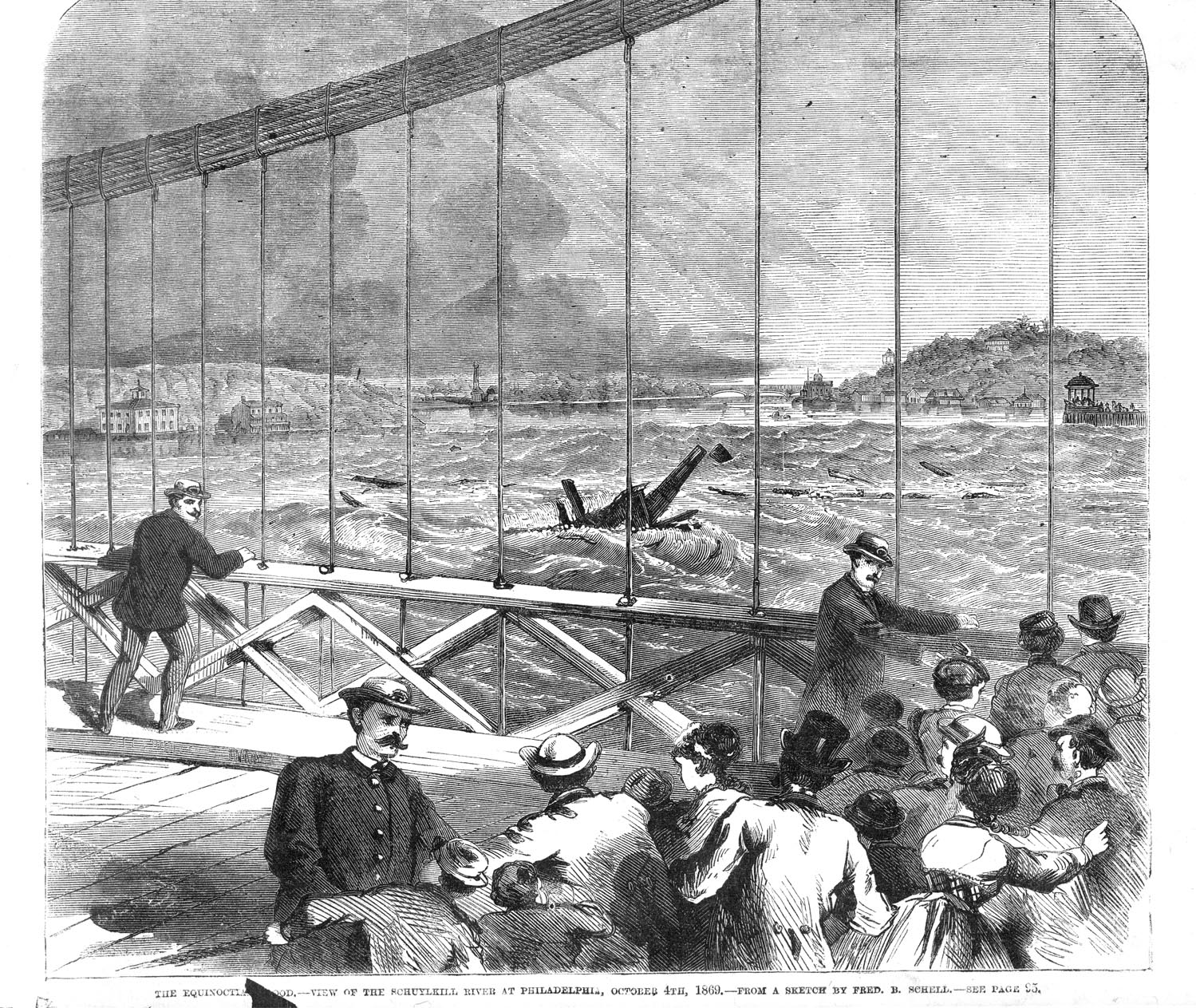
Cover illustration, Frank Leslie’s Illustrated Weekly, October 23, 1869 View of the Schuylkill River during the flood of October 4, 1869, the highest flood on record. View is from the Wire Bridge (on the line of the present-day Spring Garden Street Bridge) looking upstream toward the Fairmount Dam (invisible under the water) and Boathouse Row.
Besides the rushing water, the newspaper listed a bewildering array of material carried in the torrent: “barrels, boards, limbs and trunks of trees, boxes of [train] cars, fences in sections fifty feet in length, sheep and pig pens, articles of household use, etc.”
“Novel, indeed, and fearful is the spectacle, and the hundreds congregated in the vicinity of the place where the dam ought to be visible, speak to each other as if in apprehension that the next freak of the flood would be the washing away of the solid ground on which they stood.” — The Philadelphia Evening Telegraph
Empty freight cars were washed off their tracks, barges were torn loose from their moorings and floated downstream. Riverfront factories and houses and taverns were flooded to their second stories, lumber and coal and stone were washed off the wharfs, bridges were destroyed.
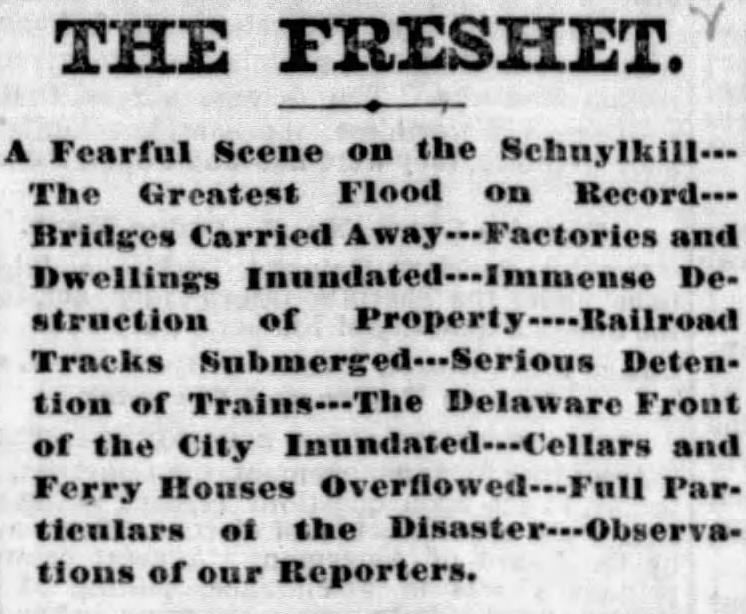
Headline, Philadelphia Inquirer, October 5, 1869. Newspapers.com.
At Manayunk, the Telegraph reporter noted, “the scene beggars description. Houses and barns, some whole, others in pieces, go floating along, while the dead carcasses of hogs and other animals that have been unable to escape the flood go jarring against the timbers which fill the river from side to side.”
“With every moment the water appears to rise still higher,” the newspaper reported on Oct. 4, “but at noon, just as it had reached its tallest limit, the sun blazed forth—in fitful glory, to be sure, but still bright enough to give assurance that the worst was over.”
Climate Change and Today
The record flood of 1869 has yet to be surpassed.
But as the old saying goes, records are made to be broken, and with climate change producing more frequent and more violent rainstorms, it is likely to be broken sooner than later. At the Philadelphia Water Department, the science of climate change is taken seriously.
That’s why Julia Rockwell, a PWD engineer who has spent years studying the issue, is joining Mayor Kenney for the C40 World Mayors Summit in Copenhagen next week, to help “build a global coalition of leading cities, businesses and citizens that rallies around the radical and ambitious climate action our planet needs.”
A half dozen staff from other City departments, including the Office of Sustainability and the Zero Waste and Litter Cabinet, are also attending:
Read about PWD's Climate Change Adaptation Program →
More Reading
You can read the entire Philadelphia Evening Telegraph report from Oct. 4, 1869, thanks to the Library of Congress Chronicling America Historic American Newspapers collection:
